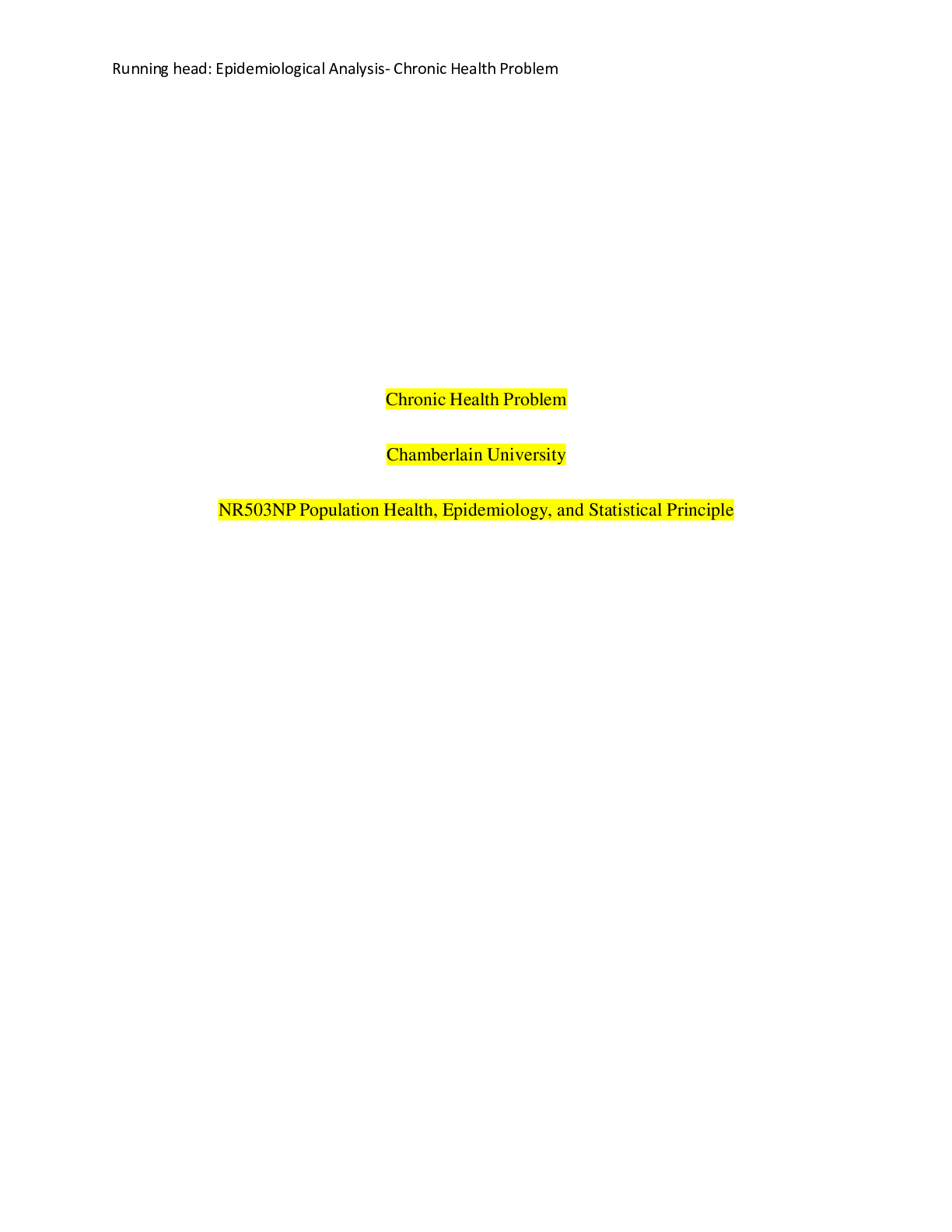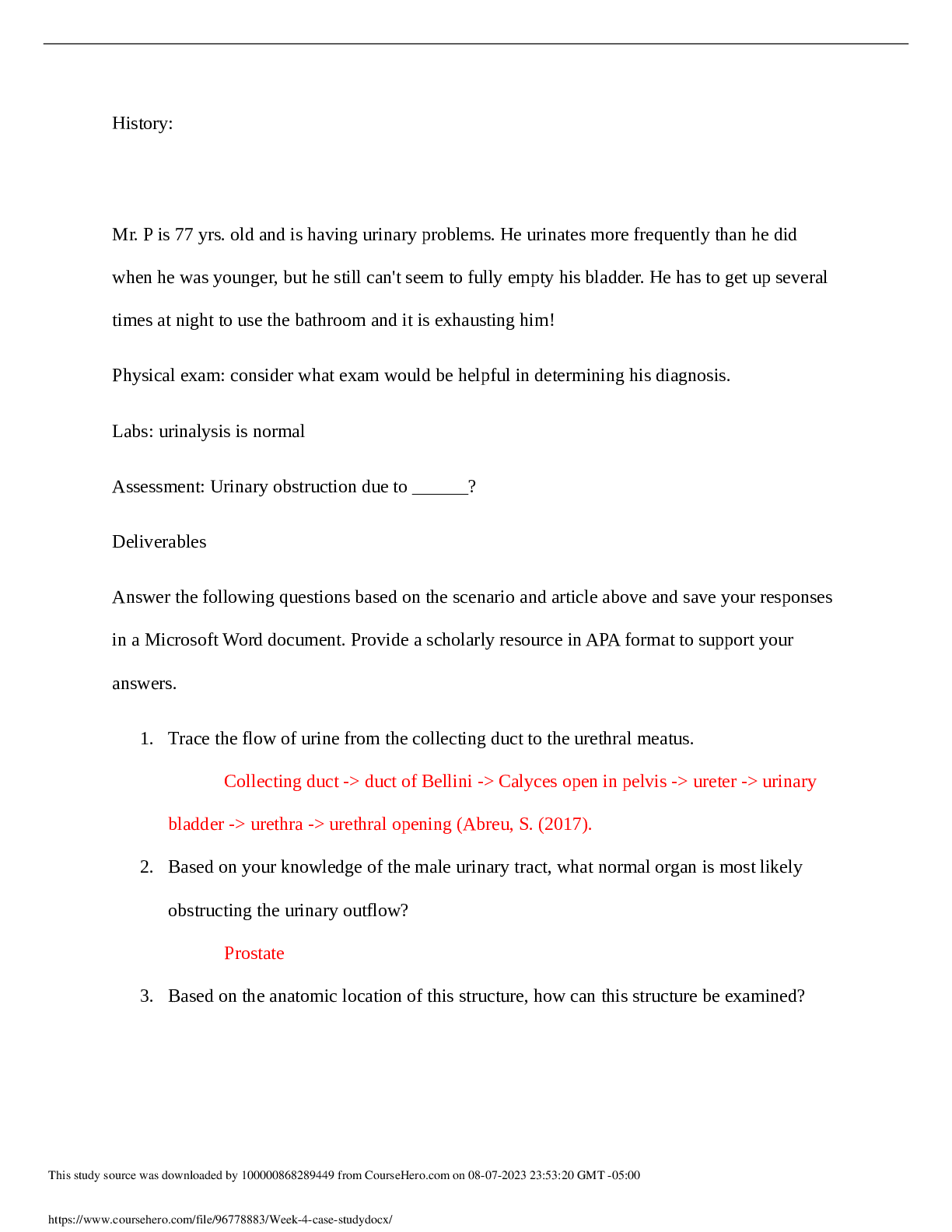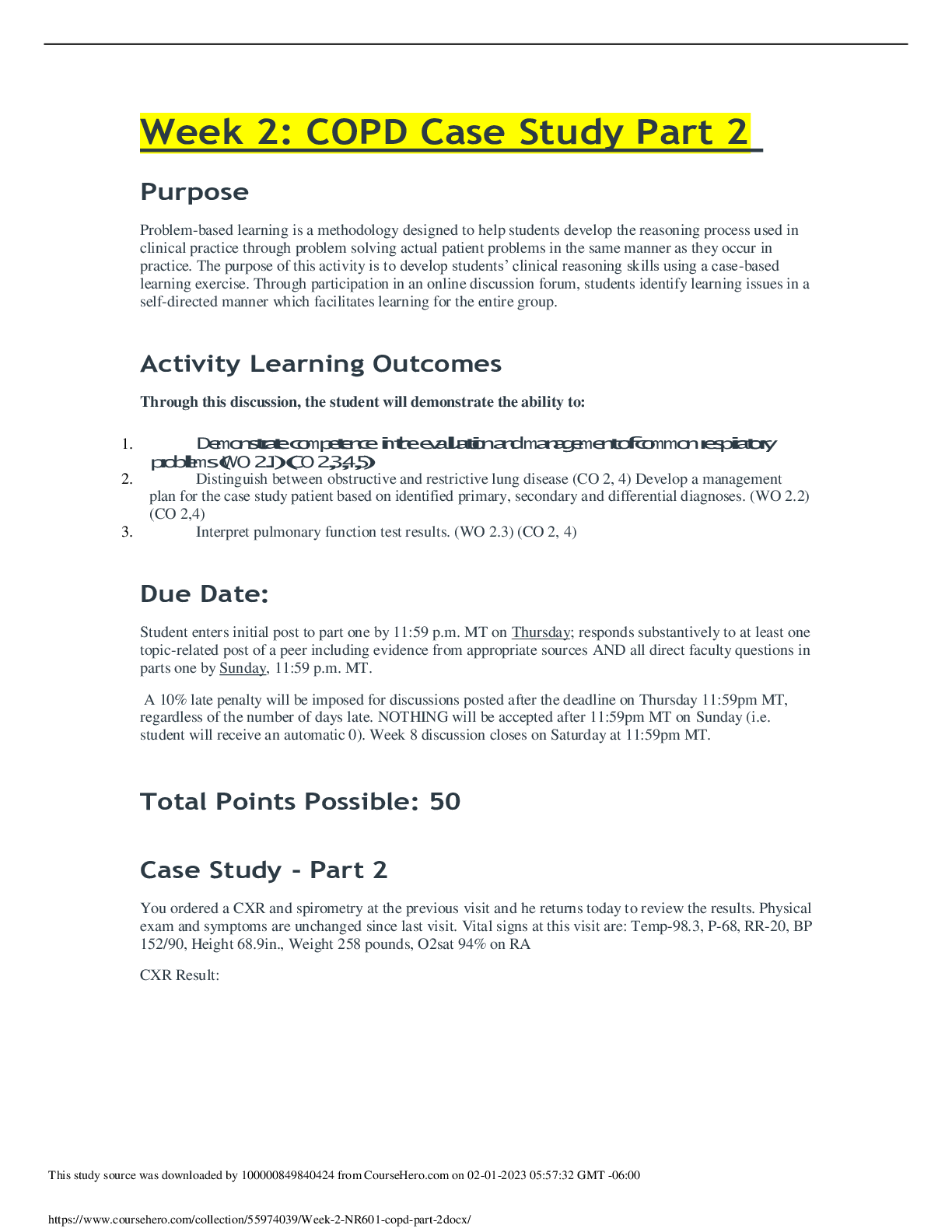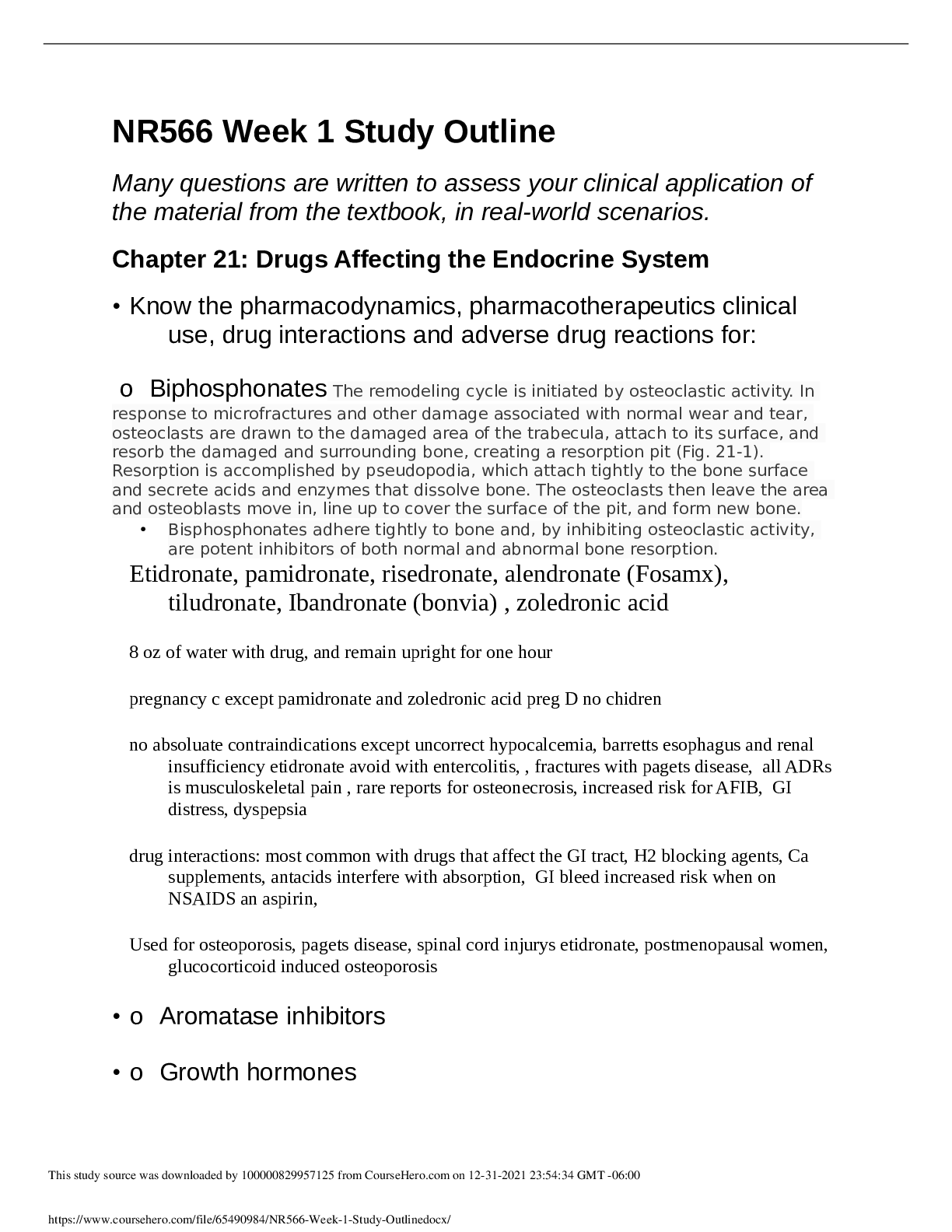Anatomy > CASE STUDY > BIOS-255 Week 3 Assignment: Case Study – Hypoproteinemia (graded) (All)
BIOS-255 Week 3 Assignment: Case Study – Hypoproteinemia (graded)
Document Content and Description Below
Week 3 Case Study: Hypoproteinemia Chamberlain University BIO255 Describe all the constituents contained in plasma and their concentrations. As we look at the co... mponents of blood, the 55% that consists of plasma includes water which serves as a solvent for carrying other substances, Ions, such as sodium, potassium, calcium, magnesium, chloride, and bicarbonate that involve osmotic balance, pH buffering and the regulation of membrane permeability (Bertholf, 2014). The plasma also consists of the following proteins albumin, fibrinogen, and immunoglobins. It involves hormones, respiratory gases, nutrients, and waste products for metabolism. All are involved in maintaining the osmotic pressure of the blood (Saladin, 2021). Explain the liver's role in the production of proteins. The liver produces bile that helps break down and absorb fats in small intensities, as well as bilirubin, which is absorbed and metabolized in the liver (Saladin, 2021). However, albumin is a protein created by the liver, assists with preventing fluid leakage, and regulates blood volume. In addition, the liver produces a protein that reserves iron in the body- ferritin (Bertholf, 2014). Why would albumin be important in regulating pressure at the capillaries? Albumin is essential to regulate the capillaries' overall osmotic pressure because it maintains the intravascular pressure, balances out toxins, and transports the therapeutic agents (Bertholf, 2014). Because the albumin attracts the fluids into the capillaries, the osmotic pressure decreases to prevent edema. Explain the process of fluid movement at both the arterial and venous side of the capillary. The arterial side is the beginning of fluid movements to the venous side of the capillary. Its gradient pressure moves from higher to lower concentration, allowing for reabsorption. The two pressure that facilitates such activity is the “hydrostatic pressure and osmotic pressure.” Overall, at the arterial end, the interstitial fluid hydrostatic pressure is less than the hydrostatic capillary pressure, which encourages the movement f fluid from its capillaries through the tissues. What can Betty do to improve her situation? Betty should first consult with her physician to improve her situation, who may prescribe medication to help address her low albumin levels and her Hep. C infection. Her physician may also prescribe antiviral medication. Betty should take a healthier and balanced diet, a vitamin- rich approach. Reference Bertholf, R. L. (2014, February). Proteins and Albumin. Laboratory Medicine, 45(1), e25–e41. https://doi.org/10.1309/lmkrnrgw5j03apzq Saladin, K. (2021). The Blood Anatomy & Physiology the Unity of Form and Function 9th Edition (9th ed.). McGraw-Hill Education. [Show More]
Last updated: 2 years ago
Preview 1 out of 4 pages

Buy this document to get the full access instantly
Instant Download Access after purchase
Buy NowInstant download
We Accept:

Reviews( 0 )
$12.00
Can't find what you want? Try our AI powered Search
Document information
Connected school, study & course
About the document
Uploaded On
Oct 26, 2022
Number of pages
4
Written in
Additional information
This document has been written for:
Uploaded
Oct 26, 2022
Downloads
0
Views
112
.png)



















